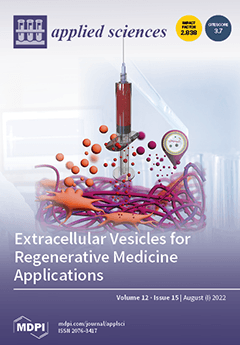Water scarcity is one of the major concerns of this century. The photocatalysis through TiO
2 can be suitable for improving liquid wastewater treatment. However, TiO
2 is used as a powder (nanoparticles), which is a drawback for full-scale applications. To overcome this,
[...] Read more.
Water scarcity is one of the major concerns of this century. The photocatalysis through TiO
2 can be suitable for improving liquid wastewater treatment. However, TiO
2 is used as a powder (nanoparticles), which is a drawback for full-scale applications. To overcome this, in the present work, powder TiO
2 was impregnated on ceramic material. Several parameters, such as support cleanliness, support load, TiO
2 suspension concentration, powder dispersion in a solvent, contact method, and drying temperature, were evaluated on the impregnation method. The influence of TiO
2 concentration in suspensions was tested from 1 to 10%
w/
w. The results showed that the preparation conditions impact the TiO
2 impregnation yield. The 10%TiO
2/Leca was the most effective in photocatalysis but had a relevant loss of TiO
2 from the support by erosion. For 3.6%TiO
2/Leca and 5%TiO
2/Leca, at TiO
2 concentrations of 86.6 and 102.5 mg/L promoted 71 to 85% of sulfamethoxazole removal in 6 h under UVA radiation, respectively. Scanning electron microscopy (SEM) revealed the TiO
2 adhesion onto the surface of the ceramic material, and the thickness of the TiO
2 layer over the support can attain 7.64 to 10.9 μm. The work showed that the TiO
2 impregnation method over Leca could be suitable for obtaining cost-effective photocatalysts.
Full article





